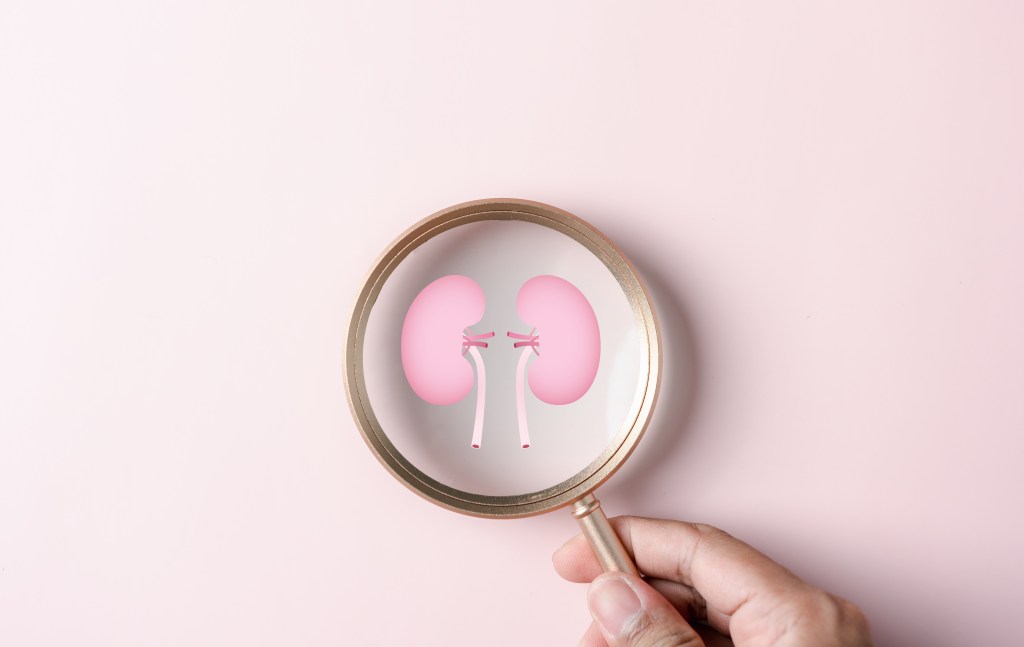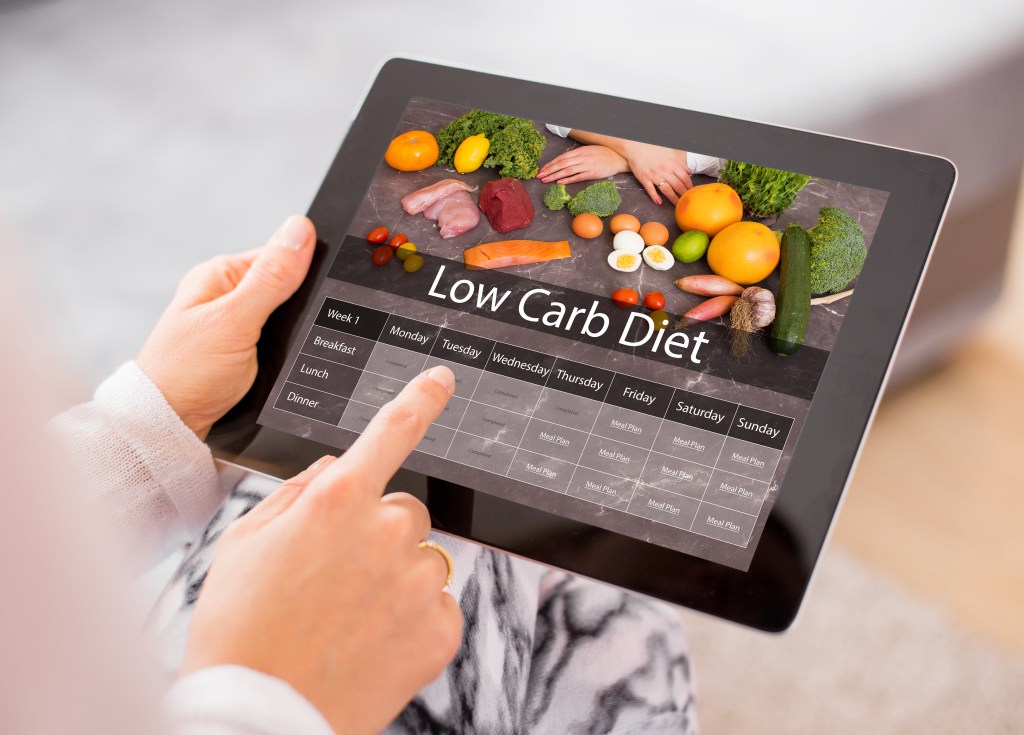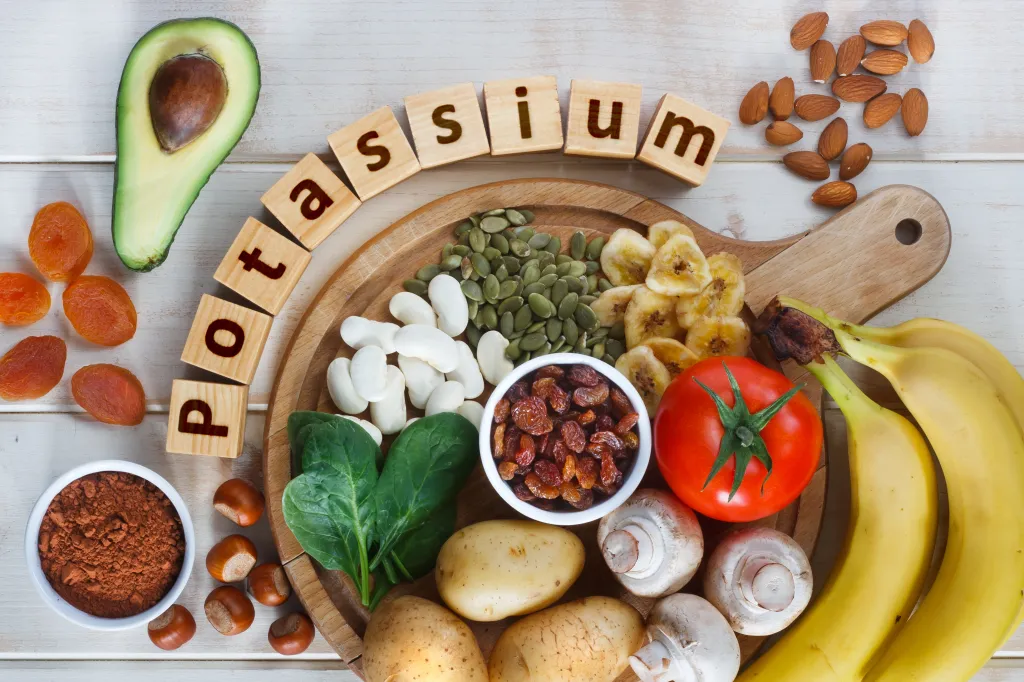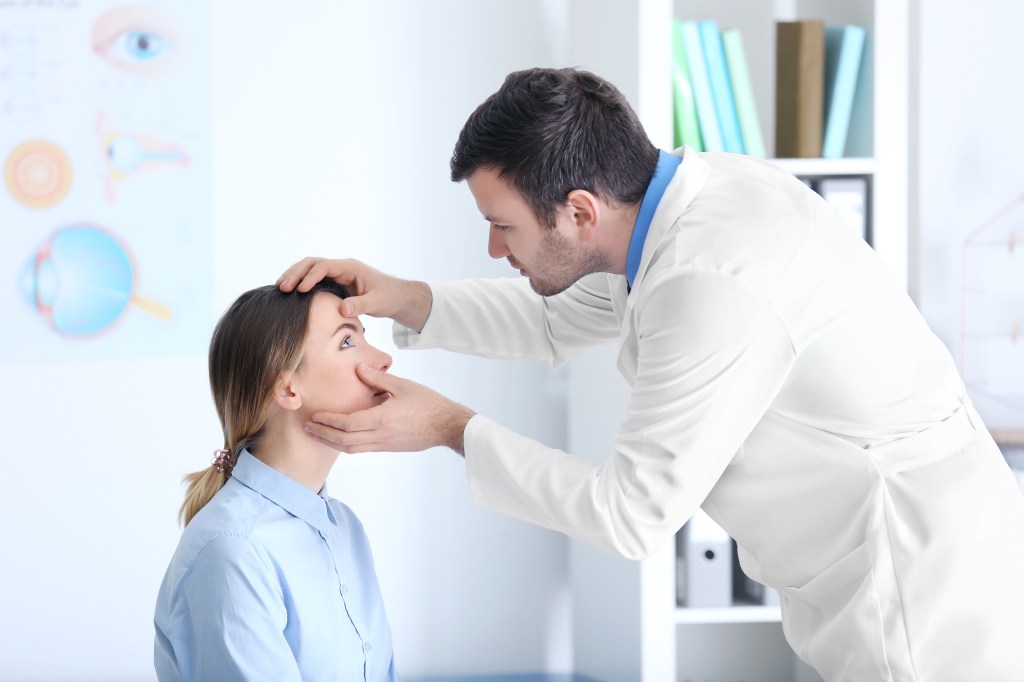At a glance
Puffy eyes can result from short-term influences, but they’re also closely linked to nutrition and metabolic health, and how they affect kidney function and fluid balance. While at-home remedies may offer temporary relief, addressing underlying dietary and metabolic factors is essential for promoting steadier fluid balance and may help reduce the appearance of puffy eyes over time.
While lack of sleep, congested sinus cavities, and seasonal allergies can contribute to puffy eyes, poor kidney function is an often overlooked cause of fluid retention and swelling around the eyes.
Discover the crucial link between kidney health and puffy eyes and learn why a high-carb diet and lack of potassium may be the root cause of persistent puffiness.
What are puffy eyes?
Puffy eyes, also known as periorbital edema, are generally a sign of excess fluid accumulation within facial tissue.
This fluid buildup causes bags under the eyes that can make you look tired and fatigued despite getting enough sleep. It can sometimes be accompanied by itchy skin, which is believed to be linked to fluid shifts underneath the skin.
In more severe cases, swelling under the eyes can become significant, leading to vision changes and an increased risk of complications if not addressed.
Watch the video below to learn how to get rid of puffy eyes for good.
What causes puffy eyes?
Puffy eyes can be caused by various factors, including aging, lack of sleep, sinus congestion, or seasonal allergies.
However, most cases of periorbital edema are linked to water retention as excess fluids in the body can strain the delicate, small blood vessels underneath the eyes.
When these vessels become leaky, fluid can seep into the surrounding tissue, creating a buildup that causes swelling and puffiness, often appearing as noticeable bags under the eyes.
Puffy eyes are often the first signal that the body’s fluid balance is dysregulated. This imbalance is commonly tied to nutritional deficiencies and poor metabolic health, both of which are strongly influenced by diet and lifestyle habits.
While many people know that too much sodium can cause fluid retention, other important factors are often overlooked. A high-carbohydrate diet and low potassium intake can contribute to excess water retention, making puffiness around the eyes more likely.
Carbohydrate intake triggers the release of insulin, a key hormone that regulates blood sugar levels and various other aspects of energy metabolism.
Research published in The American Journal of Kidney Diseases reports that insulin promotes water retention by signaling the kidneys to reduce fluid and sodium excretion, which amplifies excessive fluid buildup in the body.1
In addition, individuals following high-carb diets often lack adequate potassium, an electrolyte mineral that plays a critical role in maintaining the body’s fluid balance by directly counteracting the water-retaining effects of sodium.

The connection between puffy eyes and kidney health
Puffy eyes and facial swelling not linked to lack of sleep, sinus issues, or allergies may be early warning signs of reduced kidney function.
The kidneys remove waste products, balance the body’s fluid levels, and regulate sodium retention. When the kidneys’ glomeruli, which are tiny filtering units, aren’t working properly, fluid buildup can develop.
While fluid buildup often goes unnoticed during the early stages of kidney disease, it can manifest in sensitive areas such as under the eyes, causing visible puffiness and swelling.
According to a report published by the National Institute of Diabetes and Digestive and Kidney Diseases (NIDDK), fluid retention is a common symptom of impaired kidney function and shouldn’t be ignored.2
Interestingly, imbalanced blood sugar and insulin levels, typically linked to excessive intake of sugars and carbohydrates, can damage kidney function and increase the likelihood of swelling.
This may explain why individuals with poor blood sugar regulation or insulin resistance are more likely to develop kidney problems and fluid retention-related issues, such as puffy eyes, swollen ankles, or high blood pressure.
Several other risk factors can contribute to kidney damage and associated health issues:
- Excessive sodium intake
- High protein diet
- Diabetes
- Obesity
- Recurrent kidney infections
- Prostate enlargement
- High blood pressure
- Chronic dehydration

How to reduce puffy eyes naturally
At-home remedies, such as applying a cool compress or chilled cucumber slices to the eyes, can help temporarily relieve puffy eyes.
However, addressing the underlying causes of puffiness is the most effective long-term strategy to reduce swelling and support eye health.
Here are three ways to reduce puffy eyes naturally.
1. Follow a low-carb diet
Because sugars and carbohydrates stimulate water retention and can increase the risk of kidney damage, following a low-carb diet can improve the body’s fluid balance and help manage puffy eyes.
A low-carb ketogenic diet limits carbohydrates to no more than 50 grams daily, which helps maintain balanced insulin levels and supports better fluid regulation.
This has been confirmed by research published in the Journal of Human Nutrition and Dietetics, highlighting, “The consumption of a ketogenic diet improved lymphatic function and was associated with a clinically meaningful reduction in edema.”3
Furthermore, a health-focused low-carb approach such as Healthy Keto® emphasizes minimally processed whole foods to provide essential nutrients that support healthy circulation, kidney function, and overall metabolic balance–all crucial aspects of managing puffy eyes.
2. Practice intermittent fasting
Combining Healthy Keto with intermittent fasting is an excellent way to minimize fluid retention and alleviate eye puffiness.
Intermittent fasting, which involves prolonged periods of fasting followed by a time-restricted eating window, causes insulin levels to lower and remain steady.
This insulin drop signals the kidneys to release excess fluids and excrete surplus sodium via urine, which helps reduce swelling and makes puffiness under the eyes less noticeable.

3. Incorporate potassium-rich foods
Maintaining an optimal sodium-to-potassium ratio is vital to maintaining the body’s fluid balance.
Potassium works in combination with sodium and counteracts its water-retaining effects, helping prevent excess fluid from pooling under the eyes.
“Most people consume plenty of sodium from table salt while not obtaining enough potassium,” explains Dr. Berg. “This can lead to electrolyte imbalances and associated fluid retention, increasing the risk of swelling and puffy eyes.”
According to evidence published in the Journal of the Academy of Nutrition and Dietetics, an ideal sodium-to-potassium ratio is around 1:2, meaning it’s recommended to consume no more than 1200 mg of sodium while obtaining at least 4700 mg of potassium per day.4
Some of the top dietary potassium sources include:
- Green leafy vegetables
- Mushrooms
- Avocados
- Salmon
- Nuts
- Seeds
However, individuals with poor kidney function, especially those with advanced kidney disease, are at risk of poor mineral clearance and should consult a healthcare provider before making any significant dietary changes.

When to see a doctor
While puffy eyes are often harmless, persistent or severe swelling may signal underlying health conditions, including chronic kidney disease (CKD).
You should seek medical care if you notice foamy urine, significant swelling in your hands, feet, or ankles, as well as vision changes or vision loss. Other symptoms, such as fatigue, itchy skin, or sudden blood pressure changes, can also indicate kidney issues and warrant medical evaluation.
A healthcare provider can perform a physical exam and order diagnostic tests to evaluate kidney function and overall health.
An early diagnosis and effectively managing kidney disease with proper treatment can prevent complications and improve fluid balance, helping reduce puffiness and swelling over time.
Key takeaways
- Puffy eyes often reflect underlying fluid imbalances influenced by diet, metabolic health, and kidney-related water regulation.
- High-carb eating and elevated insulin levels can contribute to electrolyte imbalances and promote water retention, making puffiness under the eyes more noticeable.
- Low potassium can lead to fluid retention and worsen fluid accumulation beneath the eyes.
- Adopting a nutrient-dense low-carb diet, such as Healthy Keto, and maintaining an optimal sodium-to-potassium balance can support healthier fluid regulation and help reduce swelling around the eyes.
- Practicing intermittent fasting can further support metabolic health and fluid balance and may help make puffy eyes less noticeable.
FAQ
1. Can kidney problems cause puffy eyes?
Yes, kidney problems can cause puffy eyes. Poor kidney function can disrupt the body’s fluid balance, causing the accumulation of excess water and sodium. This extra fluid often appears first beneath the eyes, leading to noticeable puffiness and swelling.
2. What deficiency causes puffy eyes?
A lack of adequate potassium can contribute to puffy eyes. Potassium is a crucial electrolyte that counteracts the water-retaining effects of sodium, and a deficiency can increase the risk of fluid retention, causing excess water to collect in tissues, including the delicate area under the eyes.
3. What foods make puffy eyes worse?
Foods high in sugars and refined carbohydrates can worsen puffy eyes. High-carb foods trigger the release of insulin, which stimulates the kidneys to retain water and sodium, thereby contributing to fluid buildup.
In addition, salty and processed foods are linked to fluid retention and associated symptoms such as puffiness and swelling.
4. Can lack of sleep cause puffy eyes?
During sleep, the body regulates balance and drains excess fluids from tissues. When sleep is insufficient, this process is disrupted, which can allow fluid to accumulate under the eyes, causing noticeable puffiness.
5. How do I get rid of puffy eyes naturally?
To naturally reduce puffy eyes, it’s best to follow a nutritious low-carb diet, such as Healthy Keto®, practice intermittent fasting, and incorporate plenty of potassium-rich foods.
These strategies promote the body’s fluid balance and support healthy kidney function, two crucial aspects of minimizing swelling under the eyes.
6. When should I worry about puffy eyes?
Most cases of puffy eyes aren’t serious and often linked to a poor diet, seasonal allergies, or lack of sleep.
However, you should seek medical care if swelling is persistent, severe, or accompanied by foamy urine, vision changes, fatigue, or swelling in other parts of the body, as this may indicate underlying kidney issues.
Sources
- https://www.sciencedirect.com/science/article/abs/pii/ ?
- https://www.niddk.nih.gov/health-information/kidney-disease/ ?
- https://pubmed.ncbi.nlm.nih.gov/38837503/ ?
- https://pmc.ncbi.nlm.nih.gov/articles/PMC9237821/ ?


















